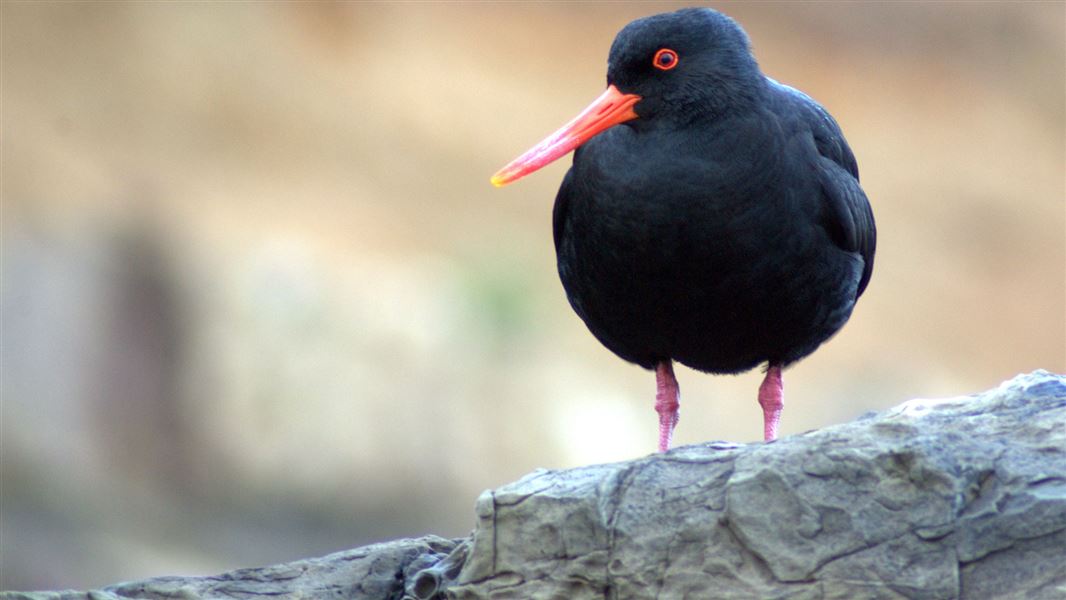New Zealand status: Endemic
Conservation status: Recovering
Found in: Most of the coastline of New Zealand
Threats: Predation
Species information: Variable oystercatcher/tōrea pango on NZ Birds Online
Variable oystercatcher (Haematopus unicolor) breed most commonly on sandy beaches, sandspits and in dunes.
They are very vocal; loud piping is used in territorial interactions and when alarmed. Chicks are warned of danger with a sharp, loud ‘chip’ or ‘click’.
Appearance
Adults have black upperparts, their underparts vary from all black, through a range of ‘smudgy’ intermediate states to white. The proportion of all-black birds increases as you head south.
They have a conspicuous long bright orange bill (longer in females), and stout coral-pink legs; their eyes have a red iris and the eye-ring is orange.
The pied morph (the form that has both dark and light colours) of the variable oystercatcher can be confused with the South Island pied oystercatcher.
Diet
Variable oystercatchers eat a wide range of coastal invertebrates, including molluscs and crustaceans which they open either by pushing the tip of the bill between shells and twisting, or by hammering. They occasionally eat small fish and a range of terrestrial invertebrates, including earthworms.
Nesting and breeding
They breed in monogamous pairs and defend territories vigorously against neighbours. Nests are normally simple scrapes in the sand and the 2–3 eggs are laid from October onwards. Incubation is shared and takes about 28 days.
The chicks fly at 6–7 weeks old and late chicks may not fledge until March. Chicks are vigorously protected by both parents, often well after fledging. Adults show high fidelity to their mate and the site.
